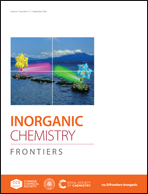Enzyme immobilization in highly ordered macro–microporous metal–organic frameworks for rapid biodegradation of hazardous dyes†
Abstract
Enzyme immobilization in hierarchically porous metal–organic frameworks (HP–MOFs) has attracted extensive attention in biocatalysis and contaminant biodegradation. However, the small-dimension mesopores and micropores on the exterior of MOFs are incompatible with large-sized enzymes, thus limiting the further enhancement of mass transfer efficiency and enzyme accessibility. Herein, we encapsulated horseradish peroxidase (HRP) in highly ordered macro–micropore zeolitic imidazolate framework-8, in which the encapsulated enzyme not only fully preserved its catalytic activity, but also exhibited long-term stability, recyclability, low leakage, and resistance to chelating compounds. Through enzyme immobilization, we significantly enhanced the biodegradation process of hazardous dyes probably as a result of the pre-concentration of the dye reactant for the combination of enzymes and MOFs. This work shows the great potential of constructing highly functional biocatalysts in three-dimensional ordered macro–micropore MOFs with enhanced mass diffusion efficiency, which is promising for applications to biodegradation of all sorts of other organic pollutants in water resources.



 Please wait while we load your content...
Please wait while we load your content...